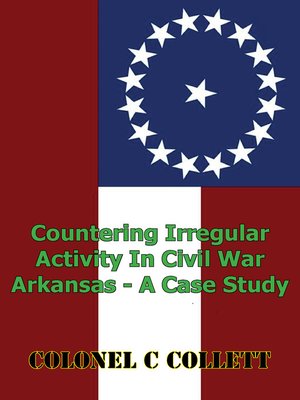
Sign up to save your library
With an OverDrive account, you can save your favorite libraries for at-a-glance information about availability. Find out more about OverDrive accounts.
Find this title in Libby, the library reading app by OverDrive.



Search for a digital library with this title
Title found at these libraries:
| Library Name | Distance |
|---|---|
| Loading... |
Civil War Arkansas endured many forms of irregular or guerilla warfare including activity that approached insurgency. It was a complex arena that resembles the present day and it illustrates much of contemporary counterinsurgency doctrine. Arkansas was a Southern state with a significant Unionist population and this divide fueled and shaped much of the conflict. Arkansas was unique in that the Confederate commander seeking to make up for conventional weakness, initiated guerilla warfare directed at Union forces. In response, Union commanders who were merely to protect lines of communication responded with punitive actions against individuals and communities which did little to reduce guerilla activity and served to alienate the local population. As the war progressed, however, guerilla bands shifted from military targets becoming progressively more terrorist, criminal, and once a Unionist state government was installed, insurgent. The Union army's role also changed as the main war moved on from the Mississippi basin and Arkansas became an early field for Lincoln's plan to reincorporate rebel states. The army's emphasis thus shifted to extending Federal authority and its organization and tactics evolved into a successful combination of locally raised troops, intelligence led operations, isolation of the guerillas, and political reconciliation.







